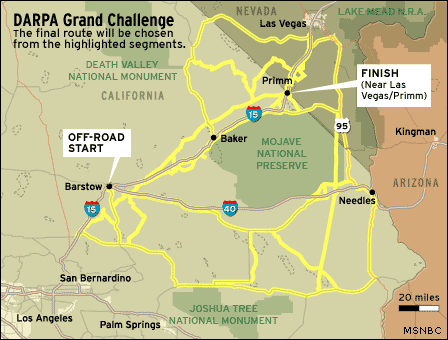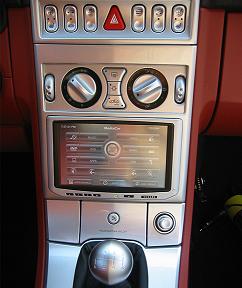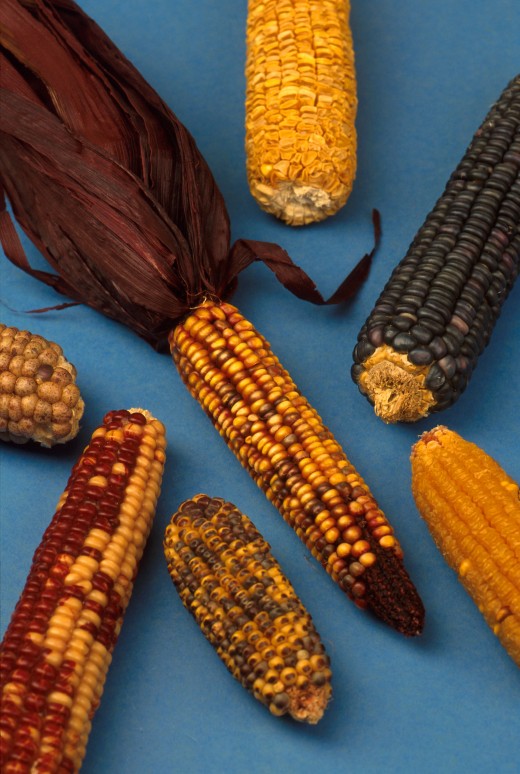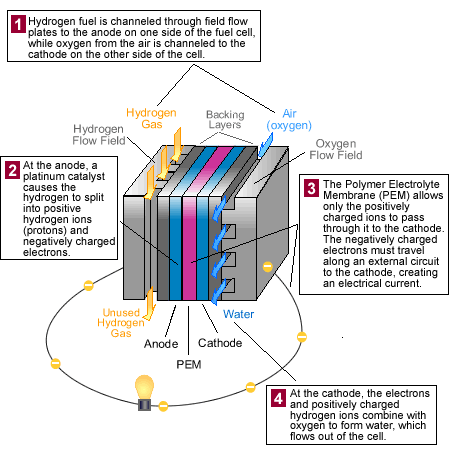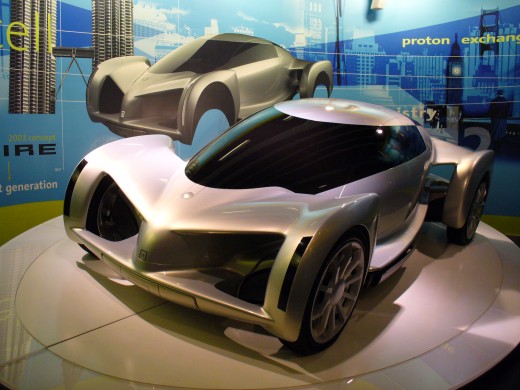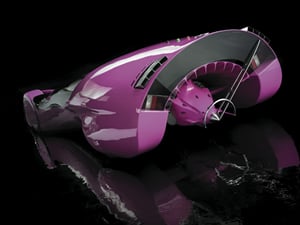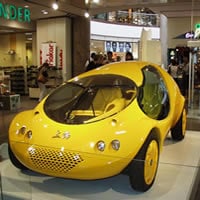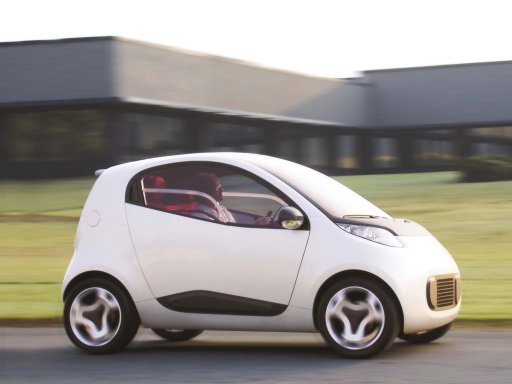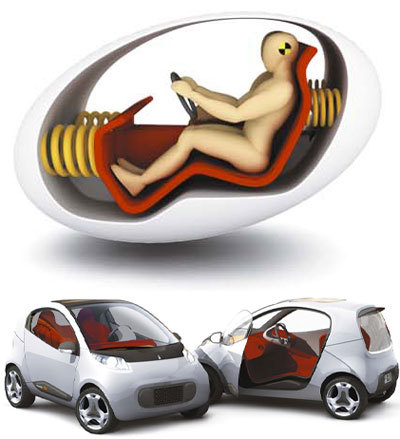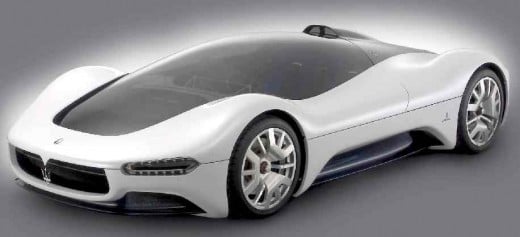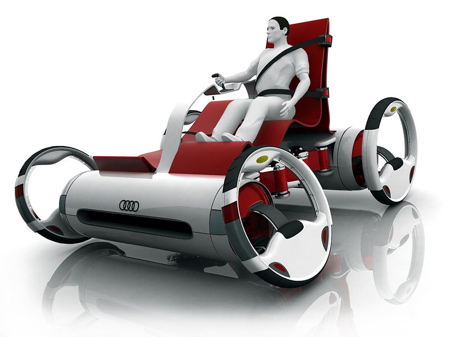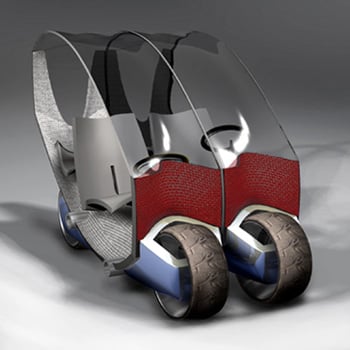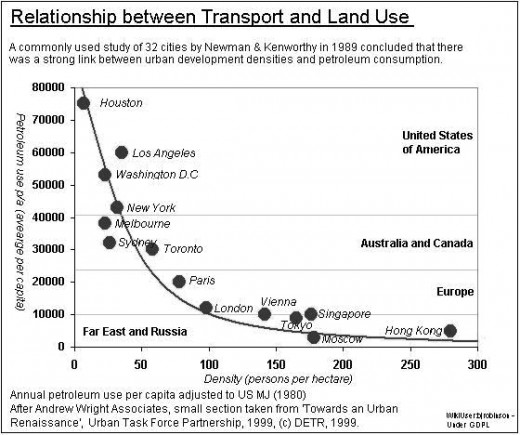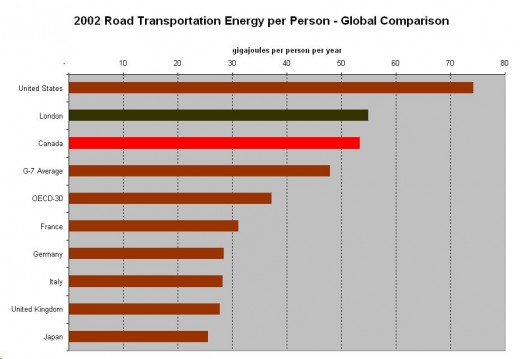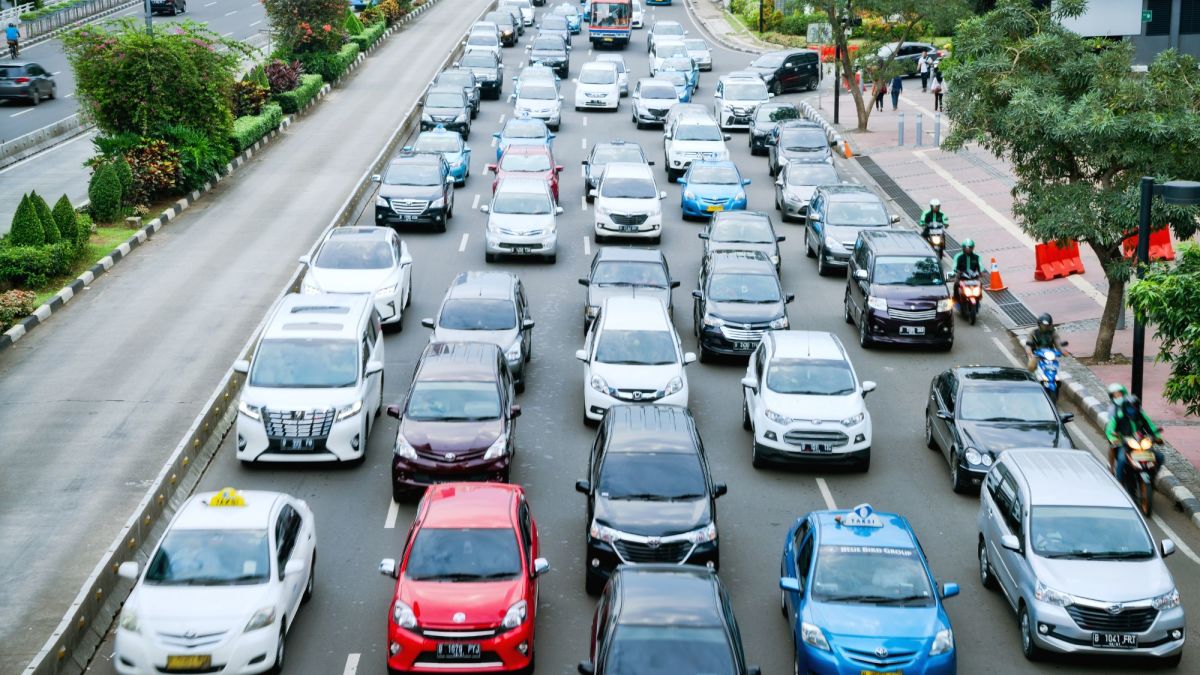The Future of the Car
DARPA Grand Challenge
Click thumbnail to view full-size

Tomorrow Car
The car of tomorrow promises to be radically different than what we are driving today.
Pardon the Science Fiction wording please.There are many reasons for these advances;
- Computing and programming
- A wider variety of fuels / more efficient use of fuel
- A broader selection and understanding of materials
- Design
- Urban planning
- Innovative thinking
In this hub I'll discuss each of the areas above and how they may affect the auto industry and the driver.
Computing and Programming: It's no accident that there are so many computers in our cars. Mine, though ten years old, has four computers in it. One each for the anti-lock brakes, transmission, engine, and the airbag system. Newer cars have one or two computers in them that can handle all the tasks of the four or more computers of the past.
Of course this all started when air quality standards were set higher and fuel injection became the fuel delivery method of choice. But once the computer made it's way into the car many other benefits emerged. Among them improved safety in braking, even better fuel economy, the ability to sense and switch engine conditions for a variety of fuels, and of course entertainment/navigation.
A wider variety of fuels: With the advent of bio-fuels and diesel replacements a much wider variety of fuels can now be considered. Some are not even typically viewed as fuel. There are cars that can run on vegetable oil with little or no modification (this was the original idea behind diesel fueled vehicles), grain alcohol, water, hydrogen, and even air.
A broader selection of materials: As materials science has improved so has the structure and body of the car. In fact, these days a vehicle frame and body doesn't just have to be strong it also has to be easily and cheaply recyclable. Advanced materials also mean that the car body of the future could weight half what they do today while retaining all (or more) of the strength of steel.
Design: With new materials will come new designs. Designs for a specific type of driver, designs for urban only environments and with innovative thinking, perhaps even designs that are specific to the passive-driver.
Urban planning: As population increases and the number of drivers on the road also rises the layout of cities and urban environments will likely also change. Cars have to be parked somewhere, but as the number of people per square mile grows so does the problem of where to "store" the vehicle.
Innovative thinking: This applies to design, planning, uses, and safety. It's no longer enough that a car look good and provide some level of safety. A car that reduces grid-lock will most likely drive itself. Since computers are much better at paying attention to boring details like the distance between cars and whether or not the vehicle is in the proper lane it's quite likely that the cars made in the next ten to twenty years will be assigned these tasks. Further, since an array of sensors and a computer will drive your car the distances and speed may be quite disturbing to our delicate sensibilities. We may not want or need to look out the windows anymore.
Additionally cars that drive themselves will also be able to communicate to each other as to position, speed, and destination. It's quite possible that we will see caravans of cars cruising down the freeway at high speed with mere inches between them. Of course the occupants will likely be doing other things like reading, watching movies, or teleconferencing.
Defense Advanced Research Projects Agency (DARPA) already has an annual autonomous vehicle contest called DARPA Grand Challenge*. This race requires an autonomous vehicle to navigate rough terrain for a distance of almost one hundred fifty (150) miles. In 2004 there were no winners. In 2005 there were five winners and in 2007 a sixty (60) mile course in urban environments that had to be completed in six (6) hours. There were six winners.
Merging Technologies
Of course many of these area will meet and combine. Surely changes in fuel will be ubiquitous. Especially, when the inefficiencies of corn to ethanol are addressed. Innovative thinking will certainly touch all other areas. Urban planning may well revolve around autonomous cars. The possibilities for interconnection are almost limitless.
* Each year the race parameters change.
In Car Computing
Click thumbnail to view full-size


Computing and Programming
As discussed above, with the advent of better and better processors and the associated efficiency of programming the possibilities for the car seem never-ending.
It is already possible to buy a car that parallel parks, dials the built-in phone for you, tunes the radio or mp3 player, and even calls out directions as you drive. There are even some in-car GPS systems that get a constant traffic update via radio signal and give you real-time traffic conditions.
If we combine some of the above why not have a car with built-in GPS that drives you from point A to point B? As with the DARPA Grand Challenge it's clearly already possible just not yet affordable.
As an intermediate step cars could be equipped with sensors that can monitor the lane markers, the driver's behavior (through wheel movement and brake pedal), and issue audible alerts of the computer detects "erratic" behavior from the driver.
Alternative Fuel
Click thumbnail to view full-size


Fuels
Corn: Contrary to what Agribusiness tells you, corn is not the most efficient source of ethanol based fuel. First only the cob has the grain necessary for fuel conversion and even then just the kernels on the cob are used not the entire cob. Then there's the problem of what to do with the fertilizer required, the cornstalk and used cob, preparing the field for the next planting and so on.
Switch-Grass: This is the poster child for a better type of plant to use for ethanol production. The ideal crop for fuel would not require fertilizer and/or field maintenance. It would not require pesticides and most of all the entire plant would be used not just some small portion of it.
The problem here is that a different method of starch extraction has to take place called cellulose ethanol extraction. The problem here is that cellulose is quite a tough substance (it's the part of the plant paper comes from) and breaking it down requires chemicals, time, and processing.
Rudolf Diesel: Designed his engines to run on "dirty" fuel without the need for any sort of ignition. Since the fuel is injected into the engine when the piston is at the top of it's stroke, and the air at the top is hot from this compression, the fuel self-ignites. Engines with this design will work on almost any combustible liquid, in fact, these engines work best if the liquid is not as volatile as gasoline.
Vegetable based fuels, bio-fuels, burn cleaner because they do not contain the sulfur compounds found in fossil fuels. Any plant that produced oil can produce fuel for a diesel engine.
Hydrogen: This gas can be used in fuel cells to produce electrical energy or as a fuel for internal combustion engines (I.C.E.).
Basically a fuel cell works by combining hydrogen and oxygen to produce water. This action of combining these elements produced electricity when an electron is stripped off during the process. If the hydrogen is burned, and its quite flammable, the same basic byproducts are produced; oxygen and water.
The main problems with these methods of use is that hydrogen is an expensive fuel to produce and store and the fuel cell itself is not very efficient. In fact the more power extracted from a fuel cell the lower it's efficiency. The other problem with hydrogen is storage. It does not work as a liquid in a fuel cell and storing hydrogen as a gas requires pressurized tanks or a system for converting the liquid into a gas just prior to use in the fuel cell. Storing hydrogen under pressure requires five to ten thousand (5,000 ~ 10,000) PSI.
Electricity: Though the battery has been with us for a very long time it took mobile computing to push storage technology to something lighter with better storage capacity. It was only a matter of time before someone decided to use these ubiquitous computer batteries elsewhere; like in cars.
Summary: I'm pretty sure that all of the current issues with the fuels above will be solved. But this presents other problems. Infrastructure being one; where will you get your fuel?
The Tesla
Materials
Cars will have to be lighter and stronger. Lighter for better fuel economy; stronger for ever stricter safety standards.
Aluminum: Is both strong and light. Is easy to recycle and is a "known" metal to material sciences. Because it can be formed much like steel automakers similar methods can be used in forming auto body parts. Aluminum's main problem is it's overall strength.Recycled aluminum takes 7% of the power to recycle as raw, mined aluminum does to process from strip mine to billet.
Plastics: With all the innovations being made in plastics, future cars will likely be made from a wide variety plant based plastics. The body work on these cars will last longer, the paint fade slower, and the weight reduction alone will amount to a substantial fuel economy improvement. Toyota is even exploring seaweed based plastics.
FRP (Fiber Reinforced Plastic): Is also both strong and light. Is not easy to recycle, as the component parts must be separated for recycling. Since it's a composite separating the component layers is problematic. Still it is six times stronger than steel by weight and is now a very well known material to engineers.
Carbon Fiber: This is a relatively new material. It shares the same problems with FRP (above) as to recycling and it is not as well "known" an engineering material.
Design
Auto designs will not only have to be strong, safe, and environmentally friendly (recyclable) they will also have to have "eye appeal."
Designs will have to accommodate the new energy sources, safety factors, and urban planning. Still, the designs coming out of Detroit and elsewhere are very eye-catching.
But the major problem as of now is that there are all these competing technologies for better fuel efficiency. Which will be the winner? Wise is the engineer who picks the right one, develops a platform around it, and manages to market it to the masses. I'm sure as you can see from the opening section one would need a crystal ball or an oracle from Delphi to tell you which one to bet on.
Car Designs
Click thumbnail to view full-size







Urbanization and Transportation
Click thumbnail to view full-size


Urban Planning
The main problem with urban planning and transportation is determining a saturation point. Cities do not magically become crowded overnight, but determining when that might happen and creating the transportation infrastructure to support that "tipping point" requires a great deal of foresight.
Business will certainly not appreciate ponying up for these costs before they are even needed and taxpayers expect to see near instant results. All of this revolves around the problem of the need to travel within or to and from urban areas. Typically any good transportation system is often followed by urban development. Continued development requires more transportation and herein lies the problem; development beyond a certain population density can quickly overburden transportation.
Innovative Thinking
It's all through this hub. A guy in his garage with spare time builds the world's fastest bike...fuel or electric. Teams of scientists are striving to win multi-million dollar prizes from DARPA. Computer scientists and urban planners are working together to create smart roadways, cars that drive themselves and look good doing it too.
With the DARPA Grand Challenge it's only a matter of time before the autonomous car is available for public consumption. Certainly the rich will be the first to use them, but time and mass production will bring costs down and eventually they will be available to all.
Notes on Videos
One of the perceived complaints about electrics is lack of speed. This is the Kilacycle. Capable of 0 to 60 in .97 seconds. This is a hobbyist effort by Bill Dube (pronounced DooBey) who works with this bike in his spare time. Hey, maybe a guy can still get rich tinkering in his garage!!!
Unfortunately the second video (below) is a bit more commercial, but the bike is nicely featured. Then there's Ian Wright of Wrightspeed. An electric car that does zero to sixty in 3.07 seconds and gets the equivalent of 170 miles per gallon.
Not fast enough?!? I beg to differ!
Kilacycle Time Trial
Future Car Series
- Future Car - Ford's Hydrogen I.C.E.
I.C.E. stands for Internal Combustion Engine. Ford is currently looking at creating a car that will bridge the gap between gasoline power and the very likely future fuel; hydrogen. The I.C.E. burns hydrogen... - Future Car - Chevrolet Volt
The Chevrolet Volt is a range extended electric that can be plugged into a standard wall outlet (120V). The vehicle to be produced by the General Motors Chevrolet division. It is expected to be launched as a 2011... - Future Car - Chrysler EV Series
EV stands for Electric Vehicle. Much to everyone's surprise Chrysler recently unveiled an all electric vehicle called the Dodge Circuit EV. The Circuit will be an all electric sports car vaguely reminiscent... - Future Car - Toyota / Honda
Sorry to join these two models in one hub, but neither company (Toyota or Honda) has a lot to say about the new models. Toyota in particular won't say anything about the upcoming Prius, but rumors abound. ... - Future Car - Subaru
Subaru is the western spelling for the Japanese word for "Pleiades." This is readily apparent looking at the Subaru logo/badge. Subaru is a division of Fuji Heavy Industries (FHI) and the word Subaru itself... - Future Car - Peugeot / Citron
Peugeot and Citron is now known as Peugeot Citron. The companies are now combined though each is marketing and selling it's own particular models. If Citron continues as a viable company remains to be... - Future Car - Renault
Renault, a French automaker, was founded in 1898 by Louis Renault, and his brothers Marcel & Fernand along with friends Thomas Evert and Julian Wyer. While Louis handled design and engineering Marcel and... - Future Car - Opel
Opel, in coopreation with General Motors, has introduced the Ampera (or is it Flextreme?) as a diesel plug-in series hybrid concept car. It can travel thirty-four (34 mi) miles on its lithium-ion battery... - Future Car - Aptera
According to Paul Wilbur, Chief Executive Officer of Aptera Motors, Aptera is Greek for - Future Car - Tesla
Tesla1 Motors was founded in 2003 by Martin Eberhard, Marc Tarpenning and Ian Wright in an attempt to build upon and market an all electric car based on the TZero AC propulsion car. The propulsion system, in... - Future Car - The Problems with Hydrogen
Hydrogen is the lightest element in the periodic table and the first listed. It is a colorless, tasteless, odorless, non-metalic gas that is highly flammable. Hydrogen can be ignited in an air (or oxygen)... - Future Car - Electricity & Battery Technology
Electricity generation and the battery technologies being explored for use in future automobiles. - Future Car - Hybrid Types
With all the talk of hybrid a discussion of the various types seemed essential. There are five types called hybrid, but by S.A.E. definition only three really are. - Future Car - Electric Motors
Introduction Though there are only brief mentions of future or car it is with this technology in mind that this hub was written.


